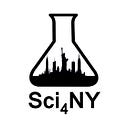What You Can Do About Climate Change: It’s Not What You Think*
By Nancy Holt
Next week, governments will again convene through United Nations-hosted talks to discuss plans for collective international climate action. For individuals personally invested in the climate crisis but not the negotiations themselves, it can be hard to understand how you can make a difference (Stop traveling to see your family? Stop using a washer/dryer? Stop eating meat?). The good news is that there are a number of ways to be effectively engaged, though they may differ from what you’ve been told.
Within the academic space, the general conversation goes something like this: Effective climate action requires political action. Therefore, individual measures to reduce emissions at the personal level are insufficient to address the scale of the problem. These individual measures are referred to as “reducing your carbon footprint” and were spearheaded by oil giant BP as a PR stunt to distract from the role of large emitters like fossil fuel companies.
If you are looking at the climate challenge from a purely mathematical angle, this argument makes sense because meaningful global emission reductions are well beyond behavioral changes any single person or series of people can make. While it’s true that emissions would be radically reduced every single American stopped driving and flying on airplanes, that world is impossible and undesirable in other ways. Individuals are generally limited in what they actually control, as they often must engage with public and private systems that generate emissions in ways that are hard, if not impossible, to avoid.
That said, the carbon footprint argument is basically apples and oranges with the global climate crisis. Reframing this conversation, we can say that the challenge we face is a global problem, but impacts us all individually. Somehow, we seem to either be expected to fix everything or do nothing, with no in-between. If instead everyone followed a common refrain of parenting and did our best, we’d probably be further along on engaging people on this issue. Currently, many people just feel detached and overwhelmed by the scope of the problem — emotions that lead precisely to inaction.
To carry this one step further, collective action is fundamentally a large number of individuals pulling in the same direction. Applying such pressure to elected officials can generate what is often referred to as political will, with the aim of policy change. If we can’t get individuals to see themselves as able to play a role in addressing the climate crisis, how do we get expect them to take on the holy grail of climate action — voting for politicians who will enact sweeping change?
Closing the loop, what makes people vote on an issue in the first place? In part, it’s because they relate to the matter in some way and they’re willing to engage with it as a result. This may include experiencing direct climate impacts, such as flooding in their basement. In a more subtle way, it can help people understand how their own actions are connected to the climate crisis. Yes — bringing your own cup to the coffee shop isn’t go to solve climate change, but it does serve to connect the issue to your daily life. In time, this can impact decisions one makes at the ballot box too.
A less discussed aspect of climate action and the role of individuals is the importance of social infrastructure, namely the people, places and institutions that allow communities to respond to climate impacts. In a fundamental sense, the stronger the local relationships one maintains with other individuals, the greater their ability to recover when extreme events upheave daily life. In the bigger picture, such connections can act as a foundation for fostering local change through political action.
Generally, when we think about reducing risk to climate impacts, we often think about more traditional, large-scale infrastructure, such as sea walls, flood gates and sewer systems. At a smaller scale, there are a variety of decisions that can occur at the individual level. For example, homeowners can decide to install permeable surfaces and/or maintain green space, both of which can reduce stormwater flooding. Co-op apartment owners can work with or on their boards to help achieve similar outcomes as well.
In perhaps the smallest and most profound sense, every individual can take it upon themselves to “learn something” about the climate crisis through trusted sources. Such an action can shift your role from passive observer to active participant. This not just impacts your own outlook, but also allows you to serve as an informational resource for those around you — spurring community-based hubs of organization and advocacy that represent the proverbial middle ground between individual action and government-based policy action.
The challenge for individuals can be to strike a healthy balance, as engaging with the climate crisis can make you feel somewhere between having the weight of the world on your shoulders to making you want to run in the opposite direction. It is important to remember that the overwhelming majority of people who care about the climate crisis will never attend an international climate negotiation. The collective push of those engaged individuals, however, is very important in making sure that policy talk translates into real-world action.
Nancy Holt, PhD leads Science for New York (Sci4NY), an effort that aims to bring local scientists and decision-makers together through project-based interaction.
* Originally appeared in the New York Daily News on 10/9/21.
